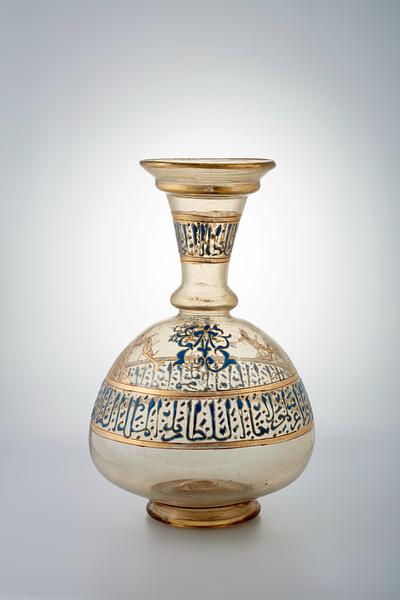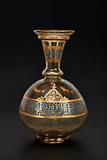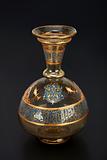The decorations on this bottle consist of two Arabic inscriptions praising an unnamed sultan, curved arabesques in blue, white, red and gold as well as four golden fish. Despite their bold colours, the decorations are characterised by a lightness that also let the transparent glass stand out, and one must imagine that the play of light in the glass and the liquid within has complemented the ornamentation.
The gold and the colourful enamel were painted onto the surface of the fully formed and cooled bottle. Following this, the entire vessel was gently reheated until the components of the coating melted and adhered to the glass. The process involved a significant risk of the flask cracking or melting, and thus would have required strict temperature control and accurate knowledge of the respective melting points of the glass and the colours.
[1]The Islamic tradition of enamelled and gilt glass is associated with Syria and Egypt in the period from approximately 1200 to 1500. The shape of this vessel is related to that of another enamelled glass bottle attributed to mid-thirteenth century Syria.
[2] The calligraphy, which combines features from the
Naskh and
Thuluth scripts, suggests a slightly later dating.
On later glass objects from the fourteenth century, the decorations gradually extend to more of the glass surface. At the same time, the arabesques are replaced by East Asian floral motifs, and the inscriptions are written in monumental, pure
Thuluth calligraphy. This style is exemplified by a glass basin with lotus motifs (
Isl 223) and a mosque lamp with Koranic verses (
D 32/1986).


.-The-David-Collection_photo-Pernille-Klemp.jpg?locale=en)
.-The-David-Collection_photo-Pernille-Klemp.jpg?locale=en)